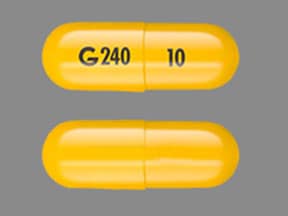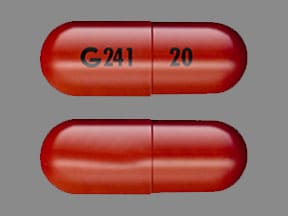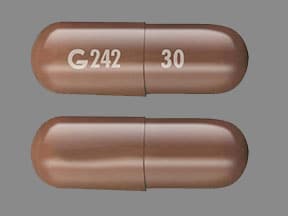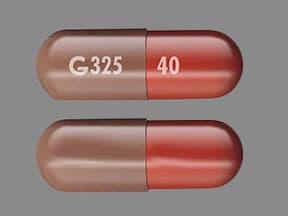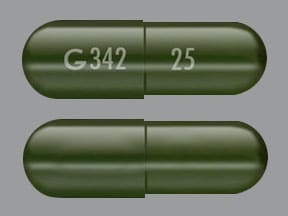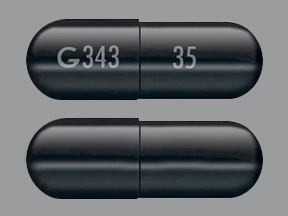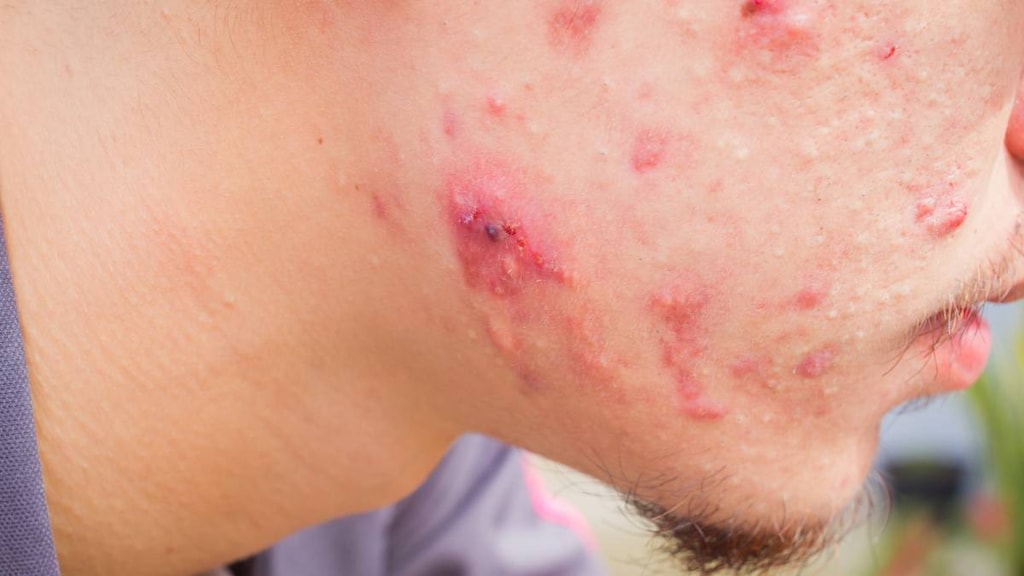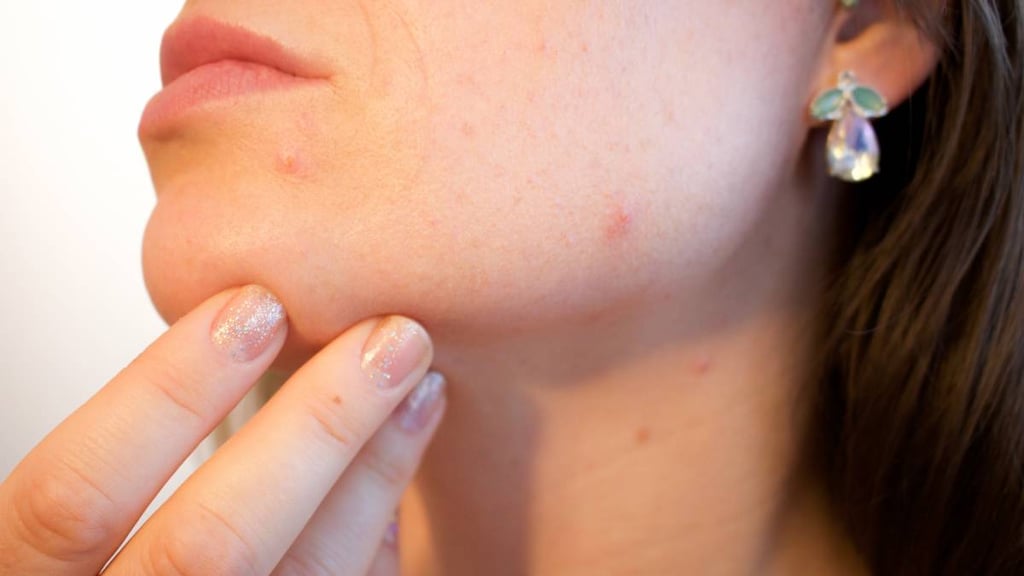What are Absorica and Absorica LD?
Absorica and Absorica LD are prescription medicines used in patients 12 years of age and older, who are not pregnant, for the treatment of severe acne (nodular acne) that cannot be cleared up by any other acne treatments, including antibiotics. Absorica and Absorica LD can cause serious side effects (see “What is the most important information I should know about Absorica and Absorica LD?”).
Absorica and Absorica LD can only be:
- prescribed by healthcare providers that are registered in the iPLEDGE Program
- dispensed by a pharmacy that is registered with the iPLEDGE Program
- given to patients who are registered in the iPLEDGE Program and agree to do everything required in the program.
It is not known if Absorica and Absorica LD are safe and effective in children less than 12 years of age.
What is the most important information I should know about Absorica and Absorica LD?
Absorica LD is not the same as Absorica or other isotretinoin generic products. Do not change between Absorica LD and Absorica or other isotretinoin generic products.
- Absorica and Absorica LD can harm your unborn baby, including birth defects (deformed babies), loss of a baby before birth (miscarriage), death of the baby, and early (premature) births. Patients who are pregnant or who plan to become pregnant must not take Absorica or Absorica LD.
Patients must not get pregnant:- for 1 month before starting Absorica or Absorica LD
- during treatment with Absorica or Absorica LD
- for 1 month after stopping Absorica or Absorica LD
If you get pregnant during treatment with Absorica or AbsoricaLD, stop taking it right away and call your healthcare provider. Healthcare providers and patients should report all cases of pregnancy during treatment or 1 month after stopping treatment to:- FDA MedWatch at 1-800-FDA-1088, and
- the iPLEDGE Pregnancy Registry at 1-866-495-0654 or www.ipledgeprogram.com. Because Absorica and Absorica LD can cause birth defects, Absorica and Absorica LD are only for patients who can understand and agree to carry out all of the instructions in the iPLEDGE Program.
- Serious mental health problems, including:
- depression
- psychosis (seeing or hearing things that are not real)
- suicide. Some patients taking Absorica or Absorica LD have had thoughts about hurting themselves or putting an end to their own lives (suicidal thoughts). Some people tried to end their own lives. Some people have ended their own lives.
Stop taking Absorica or AbsoricaLD and call your healthcare provider right away if you or a family member notices that you have any of the following signs and symptoms of depression or psychosis:- start to feel sad or have crying spells
- lose interest in activities you once enjoyed
- sleep too much or have trouble sleeping
- become more irritable, angry, or aggressive than usual (for example, temper outbursts, thoughts of violence)
- have a change in your appetite or body weight
- have trouble concentrating
- withdraw from your friends or family
- feel like you have no energy
- have feelings of worthlessness or guilt
- start having thoughts about hurting yourself or taking your own life (suicidal thoughts)
- start acting on dangerous impulses
- start seeing or hearing things that are not real
Your healthcare provider may tell you to see a mental healthcare professional if you had any of these symptoms.
Who should not take Absorica and Absorica LD?
Do not take Absorica or Absorica LD if you:
- are pregnant, plan to become pregnant, or become pregnant during Absorica and Absorica LD treatment. Absorica and Absorica LD cause severe birth defects. See “What is the most important information I should know about Absorica and Absorica LD?”
- are allergic to isotretinoin, vitamin A, or any of the ingredients in Absorica and Absorica LD. See the end of this Medication Guide for a complete list of ingredients in Absorica and Absorica LD.
What should I tell my healthcare provider before taking Absorica and Absorica LD?
Before taking Absorica or Absorica LD, tell your healthcare provider if you or a family member has any of the following health conditions:
- mental health problems
- asthma
- liver problems
- diabetes
- heart disease
- increase blood fat levels (cholesterol and triglycerides)
- bone loss (osteoporosis), weak bones or any other bone problems
- an eating problem called anorexia nervosa (where people eat too little)
- food or medicine allergies, including aspirin or tartrazine
Tell your healthcare provider if you are pregnant or breastfeeding. Do not breastfeed during treatment or for at least 8 days after the last dose of Absorica or Absorica LD.
Tell your healthcare provider about all of the medicines you take including prescription and over-the-counter medicines, vitamins and herbal supplements, including St. John’s wort. Absorica and Absorica LD and certain other medicines can affect each other, sometimes causing serious side effects.
Do not take the following medicines during treatment with Absorica or Absorica LD:
- vitamin A supplements
- tetracycline antibiotics
Know the medicines you take. Keep a list of them to show to your healthcare provider and pharmacist. Do not take any new medicine without talking with your healthcare provider.
How should I take Absorica and Absorica LD
You must take Absorica and Absorica LD exactly as prescribed. You must also follow all the instructions of the iPLEDGE Program. Before prescribing Absorica or Absorica LD, your healthcare provider will:
- explain the iPLEDGE Program to you
- have you sign the Patient Information/Informed Consent form (for all patients). Patients who can get pregnant must also sign another consent form.
- give you a pregnancy test to make sure you are not pregnant before you start Absorica or Absorica LD. You will receive 2 pregnancy tests at least 19 days apart.
You will not be prescribed Absorica or Absorica LD if you cannot agree to or follow all the instructions of the iPLEDGE Program.
- You will get no more than a 30-day supply of Absorica or Absorica LD at a time. This is to make sure you are following the Absorica and Absorica LD iPLEDGE Program.
- The amount of Absorica or Absorica LD you take has been specially chosen for you. It is based on your body weight and may change during treatment.
- Take Absorica or Absorica LD 2 times a day with or without meals, unless your healthcare provider tells you otherwise. Swallow your Absorica or Absorica LD capsules whole with a full glass of liquid. Do not chew or suck on the capsule. Absorica and Absorica LD can hurt the tube that connects your mouth to your stomach (esophagus) if not swallowed whole.
- Your healthcare provider will tell you how long you will receive treatment with Absorica or Absorica LD. Your acne may continue to improve after treatment.
- If you miss a dose, just skip that dose. Do not take two doses at the same time.
- If you take too much Absorica or Absorica LD, call your healthcare provider or poison control center right away.
- Your acne may get worse when you first start taking Absorica or Absorica LD. This should last only a short while. Talk with your healthcare provider if this is a concern for you.
- You must return to your healthcare provider as directed to make sure you don’t have signs of serious side effects. Your healthcare provider may do blood tests to check for serious side effects from Absorica or Absorica LD and may stop treatment if you get certain side effects.
- Patients who can get pregnant will get a pregnancy test each month, after you finish your course of treatment, and 1 month after you stop treatment with Absorica or Absorica LD.
- Patients who can get pregnant must use two separate forms of birth control at the same time for at least 1 month before, during treatment, and for 1 month after treatment with Absorica or Absorica LD. You must access the iPLEDGE Program system to answer questions about the program requirements and to enter your two chosen forms of birth control. To access the iPLEDGE Program system, go to www.ipledgeprogram.com or call 1-866-495-0654.
Talk about birth control options with your healthcare provider or go for a free visit to talk about birth control with another healthcare provider or family planning expert. Your healthcare provider can arrange this free visit, which will be paid for by the company that makes Absorica and Absorica LD.
If you have sex at any time without using two forms of birth control 1 month before, during, or 1 month after treatment, get pregnant, or miss your expected period, stop taking Absorica or Absorica LD and call your healthcare provider right away.
What should I avoid while taking Absorica and Absorica LD?
- Do not give blood during treatment with Absorica or Absorica LD and for one month after stopping Absorica or Absorica LD. If someone who is pregnant gets your donated blood, their baby may be exposed to isotretinoin and may be born with birth defects.
- Do not take other medicines or herbal products with Absorica or Absorica LD unless you talk to your healthcare provider. See “What should I tell my healthcare provider before taking Absorica and Absorica LD?”
- Do not drive at night until you know if Absorica or Absorica LD has affected your vision. Absorica and Absorica LD may decrease your ability to see in the dark.
- Do not have cosmetic procedures to smooth your skin, including waxing, dermabrasion, or laser procedures, during treatment with Absorica or Absorica LD and for at least 6 months after you stop. Absorica and Absorica LD can increase your chance of scarring from these procedures. Check with your healthcare provider for advice about when you can have cosmetic procedures.
- Avoid sunlight and ultraviolet lights as much as possible. Tanning machines use ultraviolet lights. Absorica and Absorica LD may make your skin more sensitive to light.
- Do not share Absorica or Absorica LD with other people. Absorica and Absorica LD can cause birth defects and other serious health problems.
What are the possible side effects of Absorica and Absorica LD?
Absorica and Absorica LD can cause serious side effects, including:
- See “What is the most important information I should know about Absorica and Absorica LD?”
- increased pressure in the brain (intracranial hypertension). Absorica and Absorica LD can increase the pressure in your brain. This can lead to permanent loss of eyesight, and in rare cases, death. Stop taking Absorica or Absorica LD and call your healthcare provider right away if you get any of these signs of increased brain pressure:
- bad headache
- blurred vision
- dizziness
- nausea or vomiting
- seizures (convulsions)
- stroke
- serious skin problems. Skin rash can occur in patients taking Absorica or Absorica LD. Sometimes rash can be serious and may lead to death. Stop using Absorica or Absorica LD and call your healthcare provider right away if you get:
- conjunctivitis (red or inflamed eyes, like “pink eye”)
- rash with a fever
- blisters on legs, arms or face
- sores in your mouth, throat, nose or eyes
- peeling of your skin
- inflammation of your pancreas (pancreatitis) can happen in patients who take Absorica or Absorica LD and can lead to death. Call your healthcare provider right away if you have any of the following symptoms of pancreatitis:
- severe upper stomach (abdomen) pain
- swelling of your stomach
- nausea or vomiting
- fever
- increased blood fat (lipid) levels. Absorica and Absorica LD can raise blood fat levels (cholesterol and triglycerides). Your healthcare provider will do blood tests to check your lipids before and during treatment. These problems usually go away when Absorica or Absorica LD treatment is finished.
- hearing problems. Stop using Absorica or Absorica LD and call your healthcare provider if your hearing gets worse or if you have ringing in your ears. Your hearing loss may be permanent.
- liver problems, including hepatitis. Your healthcare provider will do tests to check your liver before and during treatment with Absorica or Absorica LD. Call your healthcare provider if you get:
- yellowing of your skin or the whites of your eyes
- pain on the right side of your stomach area (abdomen)
- dark urine
- bleeding or bruising more easily than normal
- inflammation of your digestive tract (inflammatory bowel disease). Stop taking Absorica or Absorica LD and call your healthcare provider if you get:
- severe stomach, chest or bowel pain
- nausea or vomiting
- trouble swallowing or painful swallowing
- new or worsening heartburn
- diarrhea
- rectal bleeding
- bone and muscle problems. Bone problems include bone pain, softening or thinning (which may lead to fractures). Tell your healthcare provider if you plan hard physical activity during treatment with Absorica or Absorica LD. Tell your healthcare provider if you get:
- back pain
- joint pain or muscle pain
- broken bone. Tell all healthcare providers that you take Absorica or Absorica LD if you break a bone.
Stop Absorica or Absorica LD and call your healthcare provider right away if you have muscle weakness. Muscle weakness with or without pain can be a sign of serious muscle damage.
Absorica and Absorica LD may stop long bone growth in teenagers who are still growing.
- vision problems. Stop taking Absorica or Absorica LD and call your healthcare provider right away if you have any vision changes. Absorica and Absorica LD may affect your ability to see in the dark. This usually goes away after you stop taking Absorica or Absorica LD, but it may be permanent. Some patients get dry eyes during treatment. If you wear contact lenses, you may have trouble wearing them during and after you stop treatment with Absorica or Absorica LD.
- serious allergic reactions. Stop taking Absorica or Absorica LD and get emergency medical help right away if you get hives, a swollen face or mouth, or have trouble breathing. Stop taking Absorica or Absorica LD and call your healthcare provider if you get a fever, rash, or red patches or bruises on your legs.
- blood sugar problems, including diabetes. Tell your healthcare provider if you are very thirsty or urinate more than usual.
The most common side effects of Absorica and Absorica LD include:
- dry lips
- dry skin
- back pain
- dry eyes
- joint pain
- nose bleeds
- headache
- upper respiratory tract infection (common cold)
- chapped lips or swelling of the lips
- skin reactions
- muscle problems
- eye problems, including decreased vision
These are not all of the possible side effects of Absorica and Absorica LD. Call your doctor for medical advice about side effects. You may report side effects to FDA at 1-800-FDA-1088 or Sun Pharmaceutical Industries, Inc. at 1-800-818-4555.
Absorica and Absorica LD Images
General information about the safe and effective use of Absorica and Absorica LD
Medicines are sometimes prescribed for purposes other than those listed in a Medication Guide. Do not use Absorica or Absorica LD for a condition for which it was not prescribed. Do not give Absorica or Absorica LD to other people, even if they have the same symptoms that you have. It may harm them. You can ask your healthcare provider or pharmacist for information about Absorica and Absorica LD that is written for health professionals.
You can also call iPLEDGE Program at 1-866-495-0654 or visit www.ipledgeprogram.com.
How should I store Absorica and Absorica LD?
- Store Absorica and Absorica LD at room temperature, 68°F to 77°F (20°C to 25°C). Protect from light.
Keep Absorica and Absorica LD and all medicines out of the reach of children.
What are the ingredients in Absorica and Absorica LD?
Active ingredient: isotretinoin
Inactive ingredients:
Absorica: propyl gallate, sorbitan monooleate, soybean oil and stearoyl polyoxylglycerides. The gelatin capsules contain the following dye systems:
- 10 mg – iron oxide (yellow) and titanium dioxide
- 20 mg – iron oxide (red), and titanium dioxide
- 25 mg – FD&C Blue #1, FD&C Yellow #5, FD&C Yellow #6 and titanium dioxide
- 30 mg – iron oxide (black, red and yellow) and titanium dioxide
- 35 mg – FD&C Blue #2, iron oxide (black, red and yellow) and titanium dioxide
- 40 mg – iron oxide (black, red and yellow) and titanium dioxide
Absorica LD: butylated hydroxy anisole, gelatin, hard gelatin capsule shell, polysorbate 80, and soybean oil. The gelatin capsules contain the following dye systems:
- 8 mg – D&C Yellow #10, FD&C Blue #1, FD&C Red #40 and titanium dioxide
- 16 mg – FD&C Blue #1, FD&C Red #40, and titanium dioxide
- 20 mg – FD&C Blue #1, FD&C Red #40, and titanium dioxide
- 24 mg – D&C Yellow #10, FD&C Yellow #6 and titanium dioxide
- 28 mg – FD&C Blue #1, FD&C Red #40, and titanium dioxide
- 32 mg – ferrosoferric oxide, ferric oxide (red and yellow) and titanium dioxide
The imprinting ink of 8 mg, 16 mg, 24 mg and 32 mg capsules contain the following ingredients: potassium hydroxide, propylene glycol, shellac and titanium dioxide.
The imprinting ink of 20 mg and 28 mg capsules contain the following ingredients: ferrosoferric oxide, propylene glycol and shellac glaze.

